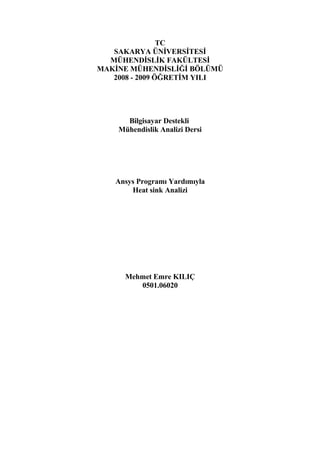Recommended
Recommended
More than Just Lines on a Map: Best Practices for U.S Bike Routes
This session highlights best practices and lessons learned for U.S. Bike Route System designation, as well as how and why these routes should be integrated into bicycle planning at the local and regional level.
Presenters:
Presenter: Kevin Luecke Toole Design Group
Co-Presenter: Virginia Sullivan Adventure Cycling AssociationMore than Just Lines on a Map: Best Practices for U.S Bike Routes

More than Just Lines on a Map: Best Practices for U.S Bike RoutesProject for Public Spaces & National Center for Biking and Walking
More Related Content
Featured
More than Just Lines on a Map: Best Practices for U.S Bike Routes
This session highlights best practices and lessons learned for U.S. Bike Route System designation, as well as how and why these routes should be integrated into bicycle planning at the local and regional level.
Presenters:
Presenter: Kevin Luecke Toole Design Group
Co-Presenter: Virginia Sullivan Adventure Cycling AssociationMore than Just Lines on a Map: Best Practices for U.S Bike Routes

More than Just Lines on a Map: Best Practices for U.S Bike RoutesProject for Public Spaces & National Center for Biking and Walking
Featured (20)
AI Trends in Creative Operations 2024 by Artwork Flow.pdf

AI Trends in Creative Operations 2024 by Artwork Flow.pdf
Content Methodology: A Best Practices Report (Webinar)

Content Methodology: A Best Practices Report (Webinar)
How to Prepare For a Successful Job Search for 2024

How to Prepare For a Successful Job Search for 2024
Social Media Marketing Trends 2024 // The Global Indie Insights

Social Media Marketing Trends 2024 // The Global Indie Insights
Trends In Paid Search: Navigating The Digital Landscape In 2024

Trends In Paid Search: Navigating The Digital Landscape In 2024
5 Public speaking tips from TED - Visualized summary

5 Public speaking tips from TED - Visualized summary
Google's Just Not That Into You: Understanding Core Updates & Search Intent

Google's Just Not That Into You: Understanding Core Updates & Search Intent
The six step guide to practical project management

The six step guide to practical project management
Beginners Guide to TikTok for Search - Rachel Pearson - We are Tilt __ Bright...

Beginners Guide to TikTok for Search - Rachel Pearson - We are Tilt __ Bright...
Unlocking the Power of ChatGPT and AI in Testing - A Real-World Look, present...

Unlocking the Power of ChatGPT and AI in Testing - A Real-World Look, present...
More than Just Lines on a Map: Best Practices for U.S Bike Routes

More than Just Lines on a Map: Best Practices for U.S Bike Routes
Heat Sink Analizi
- 1. TC SAKARYA ÜNİVERSİTESİ MÜHENDİSLİK FAKÜLTESİ MAKİNE MÜHENDİSLİĞİ BÖLÜMÜ 2008 - 2009 ÖĞRETİM YILI Bilgisayar Destekli Mühendislik Analizi Dersi Ansys Programı Yardımıyla Heat sink Analizi Mehmet Emre KILIÇ 0501.06020
- 2. 2 mm 1 mm 2 mm 1 mm 1 mm 6 mm 6 mm 1 mm 1 mm Kalınlık = 20.5 mm Çip üzerinde bulunan bir soğutucunun yarım görünüşü şekildeki gibidir. Parça alüminyum malzemeden yapılmıştır. Ansys programında parçanın 1/4’ü çizilip termal analizi yapılacaktır. k=150 W/mK TÇ =25 oC = 298K hç= 20W/m2K q=2000 W/m2
- 3. Ansys programı çalıştırılır. Preferences sekmesinde thermal seçilir. Daha sonra Workplane yardımcı komutundan WP Settings seçilir. Yandaki değerler girilerek grid oluşturulur. Grid yardımıyla Preprocessor>Modeling>Create içindeki keypoint komutuyla keypointler kolay bir şekilde oluşturulur. Oluşturulan bu keypointler Preprocessor>Modeling>Create line komutuyla birleştirilerek aşağıdaki şekil oluşturulur. Daha sonra oluşturulan şekil Preprocessor>Modeling>Create areas komutuyla alana dönüştürülür. Oluşan şekil aşağıdaki gibidir.
- 4. Parçanın et kalınlığı olduğundan Preprocessor>Modeling>Create>Operate>Extrude komutuyla parça uzatılır. Oluşan şekil aşağıdaki gibidir. Modelimizi oluşturduk. Artık değerlerimizi girebiliriz. Preprocessor>Element Type komutunda brick 8node 70 elementi seçilir. Modelimiz 3 boyutlu olduğundan 3 boyutlu element seçmemiz gereklidir. Preprocessor>Material Props>Material Models>Thermal>Conductivity>Isotropic içinde k=150 değeri girilir. Element tipini girdiğimize göre parça mesh yapmaya hazırdır. Preprocessor>Meshing>Mesh Tool içinde global sekmesinde set tıklanır. Element uzunluğu 0.0005 girilir. Daha sonra Mesh tıklanır açılan pencerede pick all seçilerek mesh işlemi tamamlanır. Mesh işleminden sonra oluşan şekil aşağıdaki gibidir.
- 5. Artık ısı akısı değerimizi ve çevre şartları değerlerini tanımlayabiliriz. Isı akısı soğutucunun alt kısmındaki alandan etkidiği için solution>define loads>apply>thermal>heat flux>on areas tıklanır. Soğutucunun alt kısmındaki alan seçilir ve istenen değere 2000 girilir. Çevre şartlarını tanımlayabilmek için solution>define loads>apply>thermal>convection>on areas tıklanır. Alan olarak dış ortamla temasta bulunan alanlar seçilir. (Soğutucunun alt kısmındaki alan hariç bütün alanlar). Alanlar seçildikten sonra açılan pencerede h=20; T=298 değerleri girilir. Solution>solve tıklanarak çözüm yaptırılır. general postproc içerisinde sonuçlar irdelenebilir. general postproc>plot results>contour plot>nodal solu>thermal gradient> thermal gradient vector sum general postproc>plot results>contour plot>nodal solu>thermal flux>thermal flux vector sum
